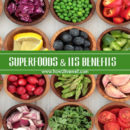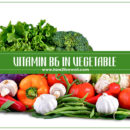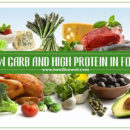Butter vs. Margarine
Butter is an animal fat and it is largely comprised of saturated fat containing cholesterol. Saturated fat can increase risk of cardiovascular disease when consumed in excessive amounts. One research study has shown that 3 tablespoons of butter per day over 4 weeks can increase total cholesterol and LDL-cholesterol. So if you use butter, you will want to keep the amount at a moderate level of no more than 1-2 tablespoons per day. But the good news is saturated fat is heat-stable, meaning that it is not as likely to degrade by cooking like margarine. Fats in butter are far superior to the rancid, highly processed vegetable oils because they are not hydrogenated.
Also butter, particularly grassfed butter, is one of the richest sources of vitamin K2 which is known to prevent arterial calcification which is a very strong (if not the strongest) predictor of cardiovascular disease, NOT cholesterol levels. Butter also has loads of natural vitamin A, D, and E that really will boost your immune system unlike the synthetic versions in margarine spreads. Truth be told, nothing manufactured in a factory and genetically modified with artificial flavors & colors or organic pollutant preservatives can never win over simple, natural, whole nutrition. So if you are still afraid to use whole butter consider using whipped or light butter. You can also look for products that are a blend of butter and olive or canola oil. Per serving, these products have less fat and calories than regular butter does. The important thing is to use them sparingly.
Therefore, butter is made by separating cream from milk, then churning the cream until it reaches a semi-solid state. Butter is at least 4000 years old and first came from camels and water buffaloes. Modern science is now confirming that butter from grass-fed cows is somewhat of a superfood. It contains CLA (Conjugated linoleic acid – one of the most potent disease fighting antioxidants going around), as well as Vitamins A, D, E and K in their natural forms. No artificial ingredients are used in real Australian butter and its yellow colour comes from the beta-carotenes consumed by cows at pasture.
Yes, conventional butter IS high in saturated fats, but it isn’t quite the villain it once was. Natural saturated fats (found in butter, coconut, meat, etc) have a very important role to play in cell membranes, giving our cells structure and integrity. They are also needed for the proper utilisation of essential fatty acids, and both saturated fat and cholesterol represent a significant portion of the myelin sheath that surrounds nerve fibers and preserves proper function of the brain and nervous system. In moderation, butter, especially organic or grass-fed butter, can indeed be a healthy inclusion to one’s diet.
What about Margarine?
Margarine sold as ‘healthfood’ due to the inclusion of ‘olive oil’ or ‘sunflower oil’ is marketing at its best. There are several problems with Margarine. It is often partially hydrogenated, resulting in the formation of trans-fats. Trans fatty acid isomers are formed during the hydrogenation process used in the food industry to harden oils. Now, trans-fats are particularly detrimental and have been linked to a wide range of conditions such heart disease, diabetes and cancer. Fortunately, Australian manufacturers have modified their manufacturing methods (in light of overwhelming evidence) to significantly reduce (but not eliminate) the levels of trans-fats in margarine. Nonetheless, consumers need to read product labels carefully because the trans-fat content of individual products can vary considerably.
How is Margarine made?
To remove impurities and unpleasant odours, margarine is both bleached and deodorised, and at this point of the processing is usually a light murky brown colour. Vitamins, colours, plant-sterols, emulsifiers, water, salt, additives, flavours and other synthetic ingredients are all added to make the product look, taste and smell more desirable. After all this, the margarine is pasturised (heated to high temperatures), packaged, chilled and sent to a supermarket near you!
In conclusion, butter wins hands down in this turf war! It is a natural product, and we don’t need a chemical lab in order to make it… any kitchen will suffice. We are pretty lucky in modern countries to have butter which comes from grass-fed cows. Adding variety to your spreads is also a great idea… so opt for avocado, hummus, nut butter or cottage cheese when you feel like a change!






